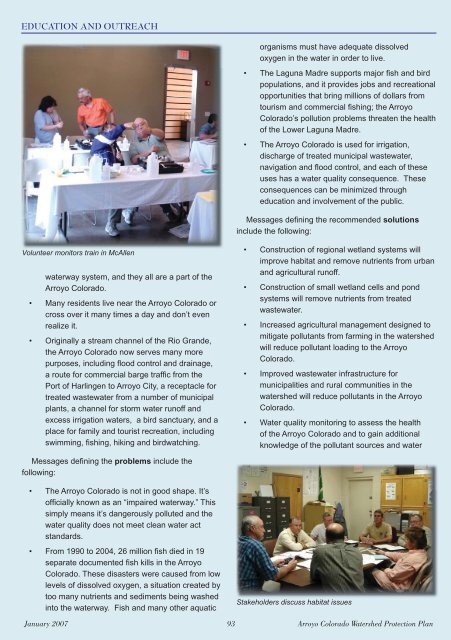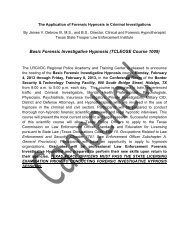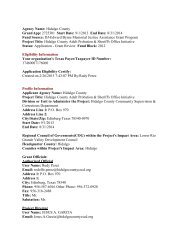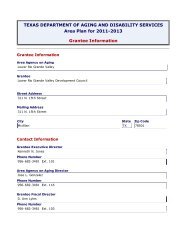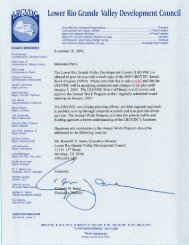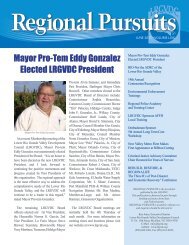Watershed Protection Plan - Lower Rio Grande Valley Development ...
Watershed Protection Plan - Lower Rio Grande Valley Development ...
Watershed Protection Plan - Lower Rio Grande Valley Development ...
Create successful ePaper yourself
Turn your PDF publications into a flip-book with our unique Google optimized e-Paper software.
EDUCATION AND OUTREACH<br />
organisms must have adequate dissolved<br />
oxygen in the water in order to live.<br />
• The Laguna Madre supports major fi sh and bird<br />
populations, and it provides jobs and recreational<br />
opportunities that bring millions of dollars from<br />
tourism and commercial fi shing; the Arroyo<br />
Colorado’s pollution problems threaten the health<br />
of the <strong>Lower</strong> Laguna Madre.<br />
• The Arroyo Colorado is used for irrigation,<br />
discharge of treated municipal wastewater,<br />
navigation and fl ood control, and each of these<br />
uses has a water quality consequence. These<br />
consequences can be minimized through<br />
education and involvement of the public.<br />
Messages defi ning the recommended solutions<br />
include the following:<br />
Volunteer monitors train in McAllen<br />
waterway system, and they all are a part of the<br />
Arroyo Colorado.<br />
• Many residents live near the Arroyo Colorado or<br />
cross over it many times a day and don’t even<br />
realize it.<br />
• Originally a stream channel of the <strong>Rio</strong> <strong>Grande</strong>,<br />
the Arroyo Colorado now serves many more<br />
purposes, including fl ood control and drainage,<br />
a route for commercial barge traffi c from the<br />
Port of Harlingen to Arroyo City, a receptacle for<br />
treated wastewater from a number of municipal<br />
plants, a channel for storm water runoff and<br />
excess irrigation waters, a bird sanctuary, and a<br />
place for family and tourist recreation, including<br />
swimming, fi shing, hiking and birdwatching.<br />
• Construction of regional wetland systems will<br />
improve habitat and remove nutrients from urban<br />
and agricultural runoff.<br />
• Construction of small wetland cells and pond<br />
systems will remove nutrients from treated<br />
wastewater.<br />
• Increased agricultural management designed to<br />
mitigate pollutants from farming in the watershed<br />
will reduce pollutant loading to the Arroyo<br />
Colorado.<br />
• Improved wastewater infrastructure for<br />
municipalities and rural communities in the<br />
watershed will reduce pollutants in the Arroyo<br />
Colorado.<br />
• Water quality monitoring to assess the health<br />
of the Arroyo Colorado and to gain additional<br />
knowledge of the pollutant sources and water<br />
Messages defi ning the problems include the<br />
following:<br />
• The Arroyo Colorado is not in good shape. It’s<br />
offi cially known as an “impaired waterway.” This<br />
simply means it’s dangerously polluted and the<br />
water quality does not meet clean water act<br />
standards.<br />
• From 1990 to 2004, 26 million fi sh died in 19<br />
separate documented fi sh kills in the Arroyo<br />
Colorado. These disasters were caused from low<br />
levels of dissolved oxygen, a situation created by<br />
too many nutrients and sediments being washed<br />
into the waterway. Fish and many other aquatic<br />
Stakeholders discuss habitat issues<br />
January 2007 93 Arroyo Colorado <strong>Watershed</strong> <strong>Protection</strong> <strong>Plan</strong>


